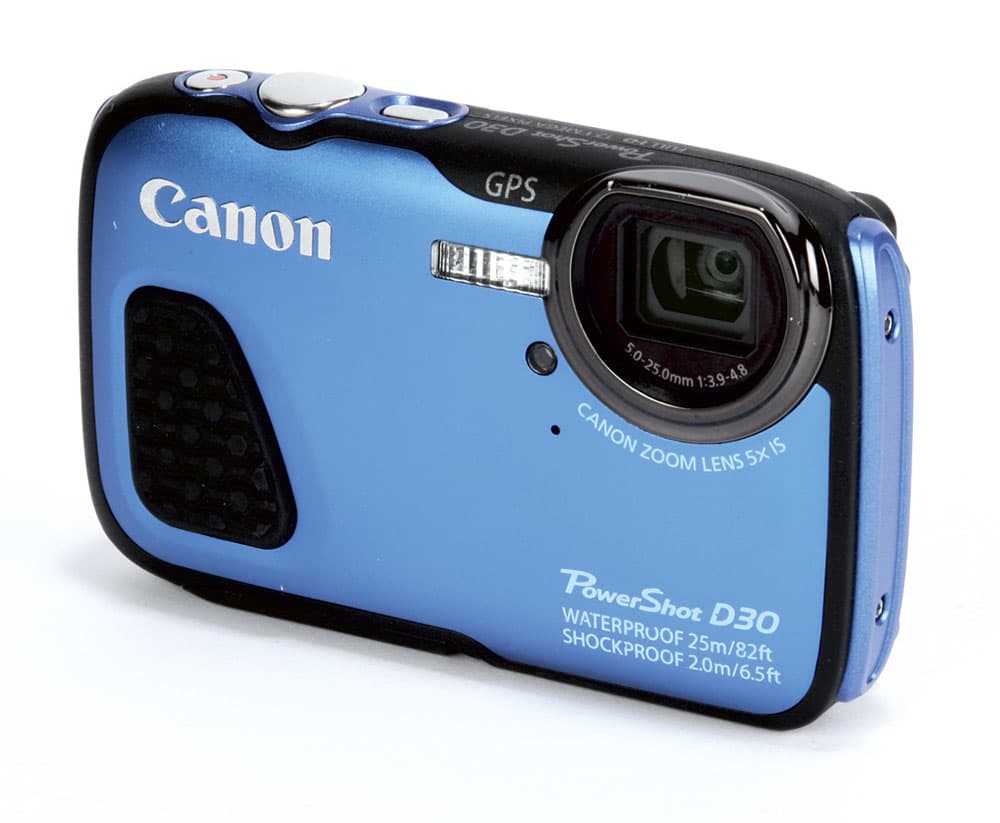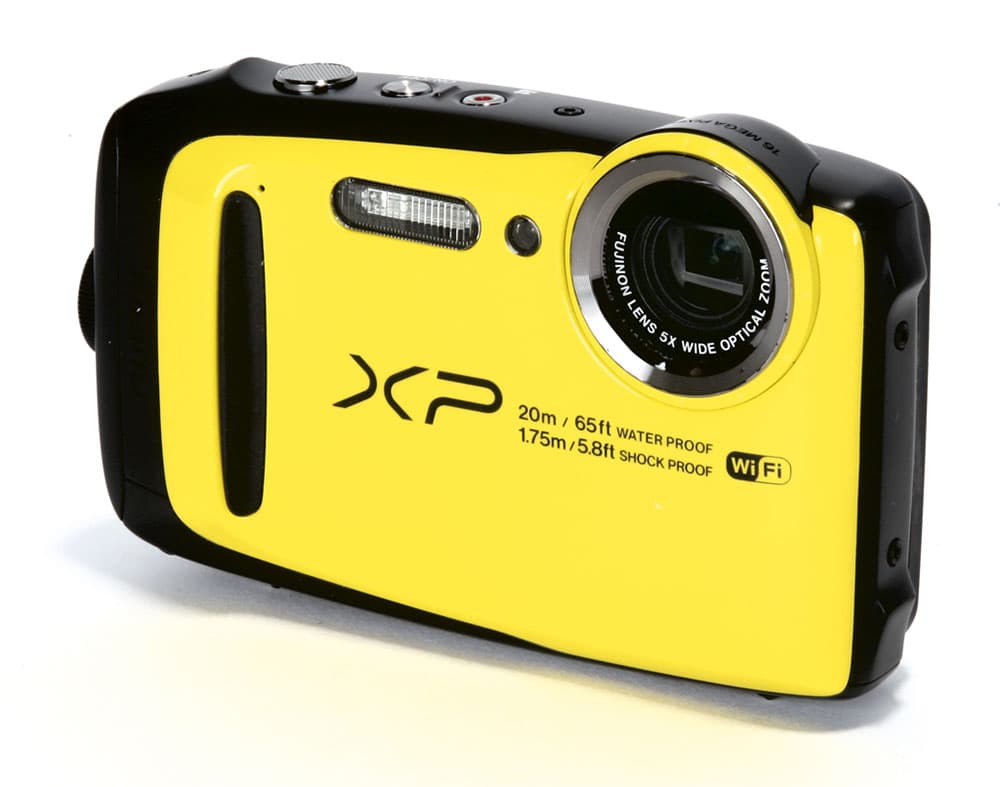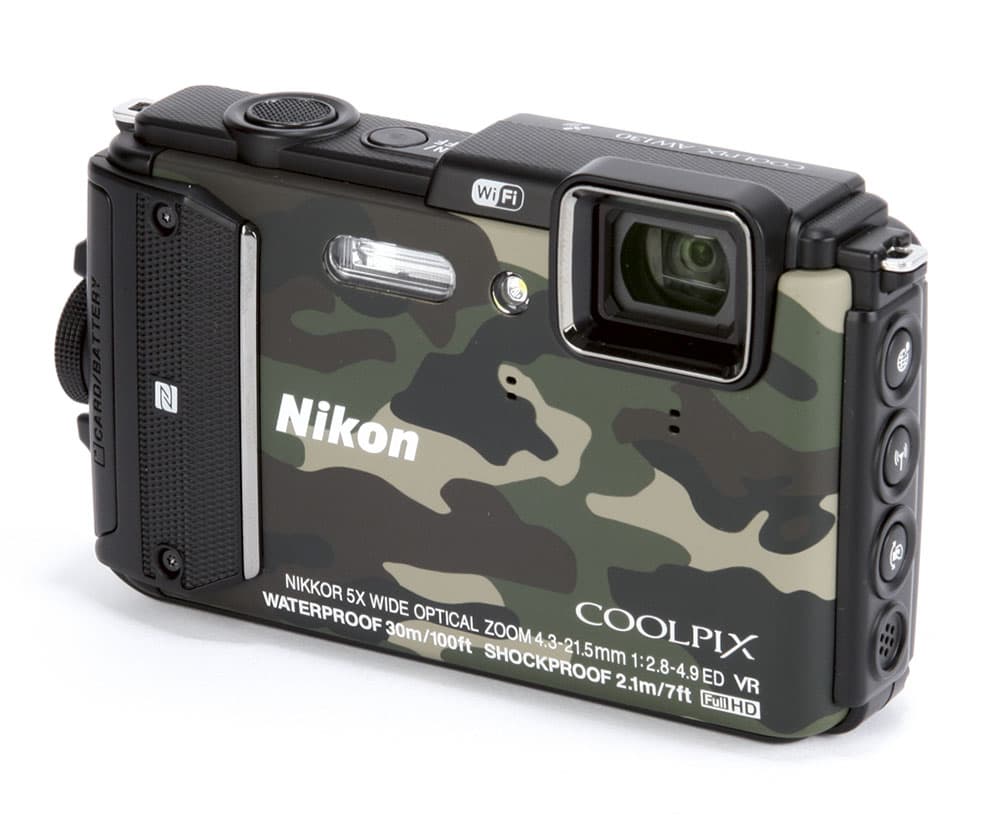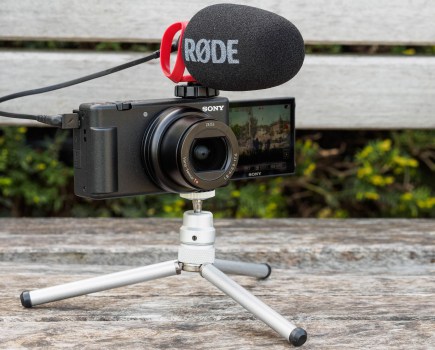If you think your smartphone is good enough to capture the best bits of your summer holiday, think again. Not all of them feature a tough, rugged or waterproof design like the best tough cameras, and dropping them in the sand, or worse, the pool, could leave you with a costly repair or replacement bill when you get home.
- See the latest tough waterproof cameras in our guide to the best waterproof cameras!
Over the years, we’ve seen camera manufacturers introduce tough models into their compact ranges and they remain hugely popular with those who’d like to take photographs off limits and capture images in situations that would otherwise wreck a smartphone or standard digital camera. Their robust designs and weather seals allow you to take them into a pool without a second thought, and better still, they’re made to be virtually indestructible so you can hand them over to kids without worrying about any damage.
In this round-up, we’ve pulled together four of the toughest compacts you can buy right now from the likes of Canon, Nikon, Fujifilm and Olympus. Before you go out and splash your hard-earned cash on one, thinking it’ll be adequate for your needs, find out how each got on when they were submerged underwater, frozen in ice and dropped on to a solid concrete floor. The results from our brutal real-world tests might just surprise you.
Canon PowerShot D30

Canon PowerShot D30 at a glance:
- Large buttons and easy to use
- Strong underwater performance
- Powers up quickly after being frozen
- Doesn’t offer raw format recording
- Sensor: 12.1MP
- Sensor size: 1/2.3in
- Lens: 5x optical (28-140mm) f/3.9-4.8
- ISO 100-3200
- Display: 3in, 416k-dot
- Video: Full HD (1920×1080
- Dimensions: 109.4x68x27.5mm
- Weight: 218g
- Price: £229
- Website: www.canon.co.uk
The Canon D30 is three years old and is starting to show its age. It lets you shoot below the water to a depth of 25m, can withstand a drop from a height of 2m and is freezeproof to -10 °C. Regrettably, though, it doesn’t let you shoot in raw format like the Olympus TG-5.
Behind the 5x optical zoom (28-140mm) lies a 12.1MP CMOS sensor that pairs up with a DIGIC 4 processor to deliver an ISO range of 100-3200. Its 1.9fps burst is extremely slow by today’s standards and makes it challenging to get that perfect shot underwater at the right time. It is equipped with GPS and an IS system to prevent blur caused by camera shake, but lacks Wi-Fi and USB charging, and is susceptible to light scratching on the screen.

The evaluative metering mode delivered consistently good exposures during our testing
The D30 doesn’t offer a great deal in the form of a handgrip, either. You do get a rubber grip at the front and rear to prevent it sliding out of your hands when they’re wet, but there are other tough cameras in this round-up that are more comfortable to hold. The concise menu is quick to navigate and the centre Func.Set button can be used to access frequently used settings in all the shooting modes.
Unlike its rivals that come in a variety of colours and finishes, it’s only available in metallic blue.
At ISO 100, the D30 resolves 2,400 lines per picture height (l/ ph), with fine detail being affected by noise beyond ISO 800. Users should avoid using ISO 1600 and 3200 for the best results. The evaluative metering mode delivers consistently good exposures and images are rich in colour without being too saturated.

The D30 delivered the best results underwater. Colours are bright, vibrant and faithfully reproduced
The camera exposed well underwater and the auto white balance produced the most neutral colour of the four cameras. After freezing it overnight and breaking it out of a block of ice, it took 40 seconds to power up. A minute later, the shutter button had defrosted fully to allow shots to be taken. Our final test involved dropping it from arm’s length onto a solid concrete floor. The plastic surround around the lens took the brunt of the fall and did crack slightly, although this didn’t upset operation.
While there are things to like about the D30 – its large buttons, intuitive menu, active display and close focusing being a few examples – it lags behind the competition in the key areas. In short, it’s not terrible, but your money could be put towards a better example.
SCORE: 3 out of 5
Fujifilm FinePix XP120

Fujifilm FinePix XP120 at a glance:
- Suitable for single-handed operation
- Well laid out buttons across the body
- Supports USB charging
- Offers little rubberised grip
- Sensor: 16.4MP
- Sensor size: 1/2.3in
- Lens: 5x optical (28-140mm f/3.9-4.9
- ISO: 100-6400
- Display: 3in, 920k-dot
- Video: Full HD (19200×1080)
- Dimensions: 109.6x71x27.8mm
- Weight: 203g
- Price: £199
- Website: www.fujifilm.co.uk
Despite feeling more plasticky than the other three cameras, the XP120 is waterproof to a depth of 20m, can withstand a drop from 1.75m and can operate in temperatures as low as -10°C. Behind its 5x optical zoom (28-140mm) is a 16.4MP back-illuminated CMOS sensor. This permits shooting across an ISO 100-6400 range. Like its rivals it provides ±2EV exposure compensation and there’s Wi-Fi to link it to any mobile devices using Fujifilm’s Camera Remote app.
In addition to its rugged credentials, it has optical image stabilisation, shoots continuously at 10fps for a maximum of 10 frames at full resolution, and supports face detection as well as full HD (1920×1080) video. At the rear, you get a 3in, 920k-dot display, but annoyingly it doesn’t rotate images in playback mode when the camera is tilted, in the way that the D30 and TG-5 do. The double-lock mechanism at the side prevents the battery compartment from being accidentally opened and below the SD card slot there’s an interface that supports USB charging.

The XP120 struggles to resolve the same level of details as its closest rivals
The camera offers little in terms of a rubberised grip, so it does get rather slippery to hold when your hands get wet. The zoom buttons protrude, making them easy to operate with your thumb and the camera can be operated single-handedly without difficulty. The menu looks somewhat dated compared to Fujifilm’s mirrorless cameras, but thankfully it’s easy enough to navigate.
The sensor doesn’t resolve the same level of detail as its rivals. You’ll want to use it below ISO 400 whenever possible and our outdoor testing revealed that it has a tendency to underexpose a little in high-contrast conditions.

The XP120’s auto white balance system doesn’t render colour as accurately as its rivals underwater
Images taken in its underwater mode have a cool feel and its autofocus didn’t lock on to our colour chart as fast as the TG-5. After being smashed out of the ice, it powered up after 2 minutes 40 seconds. The shutter button was frozen solid but after 3 minutes 11 seconds it became fully operational again. It passed the drop test with only a small mark on the corner of the body where it took the brunt of the impact.
Those who are working to a £200 budget may be tempted by what it offers for the price – just don’t expect the same results or the level of build quality you’ll get from
spending more on one of the alternatives.
SCORE: 2.5 out of 5
Nikon Coolpix AW130

Nikon Coolpix AW130 at a glance:
- Wide zoom range
- Altimeter and depth gauge for diving
- Supports USB charging
- Unable to match TG-5 focus speeds
- Sensor: 16MP
- Sensor size: 1/2.3in
- Lens: 5x optical (24-120mm) f/2.8-4.9
- ISO: 125-6400
- Display: 3in, 921k-dot
- Video: Full HD (1920×1080)
- Dimensions: 110.4x66x26.8mm
- Price: £240
- Website: www.nikon.co.uk
The Nikon AW130 is a couple of years old, and although it has been superseded by the new Coolpix W300, we’re no closer to seeing one in the flesh. Available in black, red, yellow and blue, as well as a more unusual camouflage finish, the AW130 features a 16MP CMOS sensor and 5x optical zoom covering a 24-120mm range.
Cold-resistant to -10 °C, shockproof from 2m and usable at depths down to 30m underwater, it boasts an altimeter and depth gauge, and can shoot continuously at up to 7fps. The 3in, 921k-dot screen has the highest resolution of the four on test and displays a very crisp image. Lens shift VR and Electronic VR team up together to effectively compensate for camera shake, and the sensitivity can be manually set anywhere between ISO 125- 6400. The battery door at the side locks securely like the XP120’s and behind it you’ll find a USB port that facilitates charging on the go so you don’t run out.

Detail starts to get heavily affected by noise beyond ISO 800
There’s no shortage of buttons at the rear and the zoom is operated by your thumb as opposed to your index finger. The only issue is that the buttons are on the small side, so those with larger fingers are likely to find it fiddly to use. The overall build and finish meets the high standard we have come to expect from Nikon.
Detail resolved from the 1/2.3in sensor is good, with 2,400 l/ph being resolved at its lowest ISO setting. Detail drops off beyond ISO 400, and ISO 800 is the upper limit we’d be prepared to push to on a regular basis.

The colour in the AW130’s underwater images was cooler and not as rich or vibrant as the Canon D30
Testing the camera below the water revealed it’s sluggish when acquiring focus and its auto white balance isn’t as impressive as the D30 or TG-5. There’s no quick menu to access commonly used settings either, so you’re reliant on using the main menu, which does slow you down. The camera fired into life out of the ice within 15 seconds, but we had to wait 4 minutes for the shutter button to defrost fully. A heavy drop on to a concrete floor left the camera undamaged and it powered up instantly afterwards.
The AW130 comes equipped with some tempting features and delivers a high level of detail in its images at low ISO, and boasts an excellent screen. It’s hamstrung, however, by its lack of manual aperture control, slow focusing and inability to shoot a burst at 7fps in its underwater mode. The fact it’s rather old means you may experience some difficulty sourcing a new one.
SCORE: 3.5 out of 5
Olympus Tough TG-5

Olympus Tough TG-5 at a glance:
- Offers raw format recording
- Impressive image quality
- Improves on the excellent Tough TG-4
- Provides thumb-operated mode dial
- Sensor: 12MP
- Sensor size: 1/2.3in
- Lens: 4x optical (25x100mm) f/2-4.9
- ISO: 100-12,800
- Display: 3in, 460k-dot
- Video: 4K and Full HD (1920×1080)
- Dimensions: 113x66x31.9mm
- Weight: 250g
- Price: £399
- Website: www.olympus.co.uk
The TG-5 differs from the others in this round-up in that it shoots in the raw format. The 12MP BSI CMOS sensor teams up with a TruePic VIII processor to provide a sensitivity range of ISO 100- 12,800, while the 4x optical zoom is equivalent to 25-100mm. The lens uses anti-fog dual-pane glass to stop it misting up and by positioning the lens centrally it can accommodate an extensive range of converters and accessories.
It’s built to survive a drop from 2.1m, is crushproof to a weight of 100kg, freezeproof to -10°C and waterproof to a depth of 15m. To take it deeper (up to 45m), users will need the PT-058 underwater housing (£279). To help capture fleeting moments as they happen, the TG-5 inherits the Pro Capture feature from Olympus’s OM-D series. It also provides the option of shooting a burst of up to 20fps. As well as offering Wi-Fi and GPS, it features a compass, manometer and temperature sensor.

The TG-5 preserves a good level of detail right up to ISO 1600
You get a zoom lever that encircles the shutter button and a scroll wheel on the corner to take control of exposure compensation. Having a mode dial is a good idea in principle, but be warned that it can get stiff if sand gets trapped behind it. Button placement is excellent and the central OK button loads a quick menu so you can adjust settings on the fly. The screen doesn’t trump the one you get on the AW130. However, it clearly displays shooting settings around its perimeter. Elsewhere it supports USB charging and is also available in a striking red colour.
We captured sharp and vibrant images, with 2,400 l/ph recorded by the TG-5’s sensor at ISO 100. The exposure system delivers good exposures in high-contrast scenes and detail is well preserved up to ISO 1600.

Colour is handles well underwater. You can expect bright and faithful colours straight out of the camera
A real boon of the TG-5 is its fast autofocus response, which is noticeably faster than its rivals. The auto white balance does a commendable job of ensuring colour is vibrant when shooting underwater scenes. It burst into life 1 minute 55 seconds after being broken out of ice, and we were able to pre-focus and take an image 15 seconds later. We dropped it from arm’s length and it switched on and worked perfectly, with no sign of any damage.
Olympus’s TG Tough compacts have only got better with age. The TG-5 is a great all-round model and puts in a sensational image-quality and usability performance. It’s the real standout here.
SCORE: 4 out of 5

Each compact was frozen as part of our testing
Best tough cameras – Our verdict
Pitting four tough compacts against each other has revealed that not only do some offer more advanced features than others, but also there are cases where one will perform well in one area but not so well in another.
A good example is the Canon D30. Although it’s easy enough to use and produces decent results underwater, it’s starting to show its age when you test it alongside its rivals. It doesn’t allow you to shoot in the raw format (although the same can be said for the Nikon AW120 and Fujifilm XP130) and it’s missing a few key features we expect to see on a tough compact today, such as Wi-Fi, USB charging and the ability to rattle out a fast burst to increase your chances of getting a great shot underwater.
The Fujifilm XP120 is quite a new contender in this area of the market and doesn’t skimp on features. It fits the hand well and is available for under £200, but feels quite plasticky. We found it less robust than the others and it is fundamentally let down by its image quality and sluggish focusing. Those tempted by it would be better off saving their money and putting it towards the Olympus TG-5.
As for the Nikon AW130, it didn’t fare best in our underwater or freeze tests. It has the best screen of the quartet, but lacks any form of manual control of aperture, has small fiddly buttons that aren’t particularly well spaced and doesn’t allow you to shoot a continuous burst in its underwater mode. Hopefully it won’t be too long before we get to try out Nikon’s replacement in the form of the Coolpix W300.
And the winner is…
The standout model here is the Olympus Tough TG-5. The TG-5 performs well in all the areas that a great tough compact should – it handles well, produces strong results straight out of the camera when used above and below the water, and isn’t sluggish or slow when asked to focus. It has a fast lens with manual aperture control, and its ability to shoot in raw gives you a big advantage at the editing stage. Factor in other advanced features such as 4K video, Pro Capture mode and the fact it has an extensive range of converters and accessories, and it’s a clear winner in its field. If it’s the best tough compact you’re after, you won’t regret paying more for the absolutely excellent Tough TG-5.







